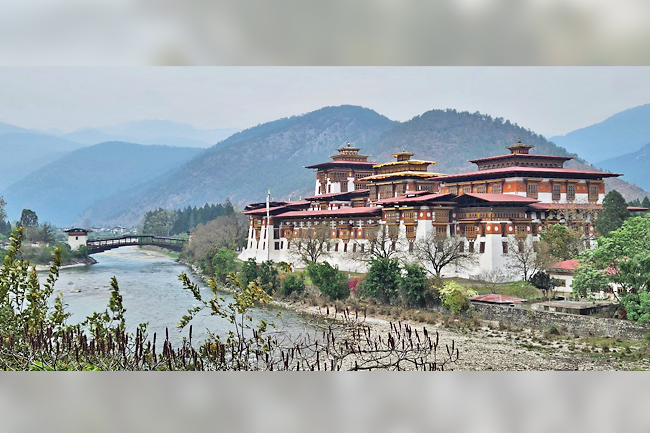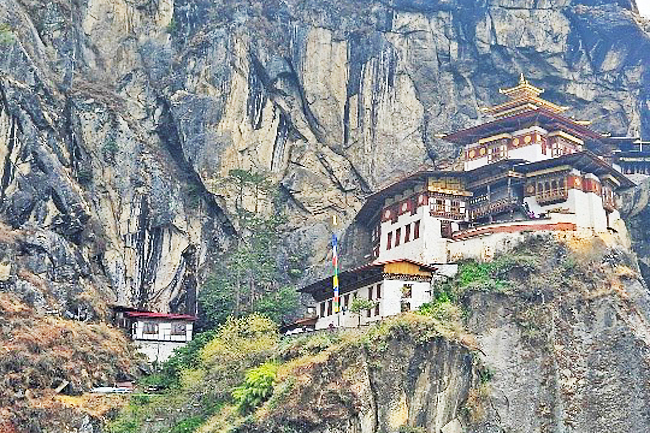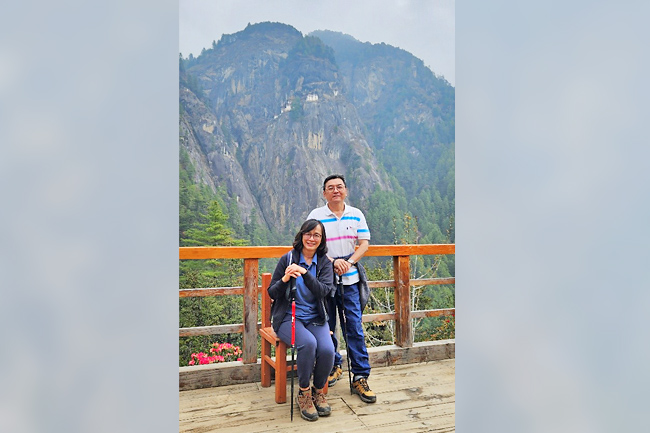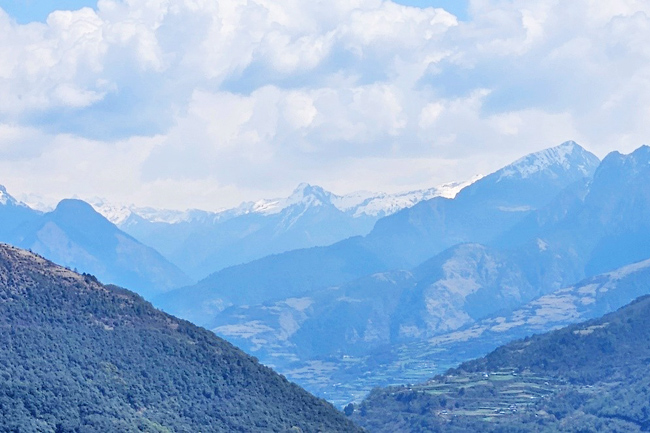Continuing our exploration of Bhutan, this feature dives deeper into the enchanting landscapes and cultural treasures encountered during our seven-day journey.
From the serene valleys of Punakha to the towering peaks of Gangtey and the ancient splendour of Paro, each day brought new marvels and insights into this remote Himalayan kingdom.
After a night in Punakha, day four took us on a breathtaking three-hour drive to Gangtey. Nestled amidst the Himalayan peaks, Gangtey Goempa, established in 1613, sits atop a forested hill overlooking Phobjikha Valley.
Built through communal effort, the monastery features a central tower surrounded by five temples. The valley is a sanctuary for the endangered Black-Necked Crane, migrating from Tibet each winter and circling the monastery thrice upon arrival and departure.
We embarked on the Gangtey Nature Trail, a serene two-hour trek starting from Gangtey Goempa. Passing through flat grasslands, farmhouses and pine forests, we reached a spacious valley, revelling in Bhutan’s stunning landscapes.
En route back to the hotel, we visited the Black-Necked Crane Education Centre, delving deeper into the significance of these birds in Bhutanese culture and beliefs.
After a night in Gangtey, we departed early on day five for Paro, our journey’s end and starting point. The scenic five-hour drive unveiled Bhutan’s diverse flora and fauna, from grey and golden-brown langurs to yaks.




Mountainous roads bordered by red rhododendrons led us past apple orchards, dairy farms, and wheat fields in the valleys.
Arriving in Paro Valley, renowned for its ancient monasteries and temples, we savoured lunch at Babesa Village Restaurant, housed in a 600-year-old farmhouse. Classic Bhutanese dishes, including a delightful rendition of ema datshi chilli and cheese, awaited us before further exploration of Paro.
After lunch, we visited Paro Dzong, also known as Rinpung Dzong, built in 1646 atop a hill overlooking Paro Township. The complex houses 14 buildings with unique architecture and carvings, earning its nickname, the ‘Fortress of a Heap of Jewels’.
Inside, we marvelled at the breath-taking architecture and beautiful frescoes. Fun fact: scenes from Bernardo Bertolucci’s 1993 film Little Buddha were shot here.
Later in the afternoon, we strolled down Paro town’s main street, lined with shops offering brass wares, silk scarves, incense sticks, and silver jewellery.
We collected several souvenirs before retiring early in preparation for the hike to Tiger’s Nest the next day.
We began day six at sunrise with the highlight of our Bhutan trip: a hike to Taktsang Monastery, known as Tiger’s Nest.
Perched dramatically on a cliff at 3,120 metres, it’s reached via a 4.5 kilometres (km) trail.
The hike includes a gentle uphill stretch for 2km, offering breath-taking views, followed by a 1.44km trek along the cliff side with optimal views of Paro Taksang.
The final 0.6km involves 700 steep stairs, challenging even for fit hikers. It took us three and a half hours to reach the monastery, with breaks at rest stops along the way. The awe-inspiring scenery and panoramic views kept us motivated through the challenging terrain.
Upon reaching Taktsang Monastery, I felt a profound sense of accomplishment, savouring the stunning vistas from the journey and revelling in reaching our destination. Built in 1692, the monastery comprises four main temples and eight caves intricately integrated into the granite rock formations.
Each temple houses sacred relics, elaborate murals, and spiritual artefacts. Descending from the monastery was less demanding, taking about three hours, including a lunch break at a midway restaurant.
After our trek, we indulged in a traditional Bhutanese hot stone bath at a farmhouse on the outskirts of Paro to soothe our tired muscles.
This unique bathing ritual involves fresh river water infused with Artemisia leaves, heated by red-hot river stones.
Adjusting the water’s temperature with more stones, believed to release minerals with therapeutic properties, we relaxed in our tubs for an hour, feeling our fatigue dissipate.
After a restful night, we rose early on day seven to bid farewell to the stunning Himalayan country.
We caught an early flight back to Singapore, then connected to Brunei. Our journey through Bhutan left us awestruck by its rich culture, traditions, architecture and landscapes. The experience of hiking amidst such breath-taking scenery made our trip truly unforgettable – an once-in-a-lifetime adventure. – Professor Dr Kenneth Kok Yuh Yen




